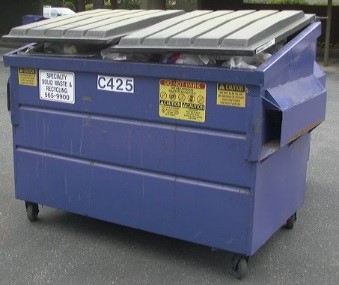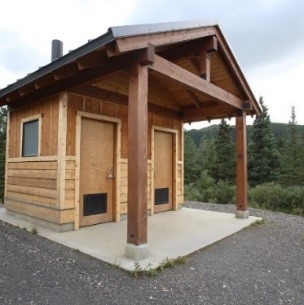National Coalition on Truck Parking: Parking Capacity Working Group - Considerations for Maintaining Low-cost Truck Parking Facilities
Printable Version [PDF 112KB]
You may need the Adobe® Reader® to view the PDFs on this page.
Contact Information: Freight Feedback at FreightFeedback@dot.gov

U.S. Department of Transportation
Federal Highway Administration
Office of Operations
1200 New Jersey Avenue, SE
Washington, DC 20590

There are a number of options that truck parking operators can choose to minimize maintenance responsibilities and costs at truck parking facilities. These facilities are designed around the needs of the truck drivers, and do not typically cater to the general travelers. Thus, usage is less than a typical truck stop or rest area. Below are descriptions of some of the options operators can select to save time and money.
Trash Removal
Organizations looking to operate low-cost facilities should consider their methods of trash collection. Using dumpsters to collect trash requires less frequent emptying, which will reduce maintenance costs and responsibilities. Dumpsters need to be emptied approximately once a week at truck-only facilities. Regardless of the method used for trash collection, it is important to provide trash receptacles at any truck parking facility.
Surface Material
Low-cost paving material facilities could consider using is soil-cement, a highly compacted mixture of soil/aggregate, cement, and water. However, it is better suited to warm and dry climates because moisture, freezing, thawing, and plowing create a lot of wear and tear on the material. Gravel is another low-cost paving material that could be considered. Consider which materials would work best for the climate and amount of use of the facility.
Toilets
Vault toilets (non-flush toilets with a sealed container, or vault, buried in the ground to collect waste) are a toilet option for low-cost truck parking facilities. At a truck-only facility, a vault toilet would need to be pumped out about once a month. Vault toilets are well-suited to lower-use facilities that cater to truck drivers. High-use facilities would require more frequent emptying of the vault, increasing operating costs. The cost of maintenance is less than portable toilets.
Safety and Security
When building additional truck parking capacity, organizations should consider security measures. Safety measures may include emergency phones, fire extinguishers, and access to a defibrillator. Security measures may include fencing and/or other barriers, security cameras, and lighting. Operators may consider solar for decreased maintenance costs. While implementing all of these ideas may not be low-cost, it is something operators should consider when adding parking capacity.

Figure 1: Photo of a dumpster.
Source: https://commons.wikimedia.org/wiki/File:Dumpster-non.JPG

Figure 2: Photo of a vault toilet in Denali National Park.
Source: https://www.nps.gov/dena/planyourvisit/campground-tek.htm
Cost Comparison: Rest Area Versus Truck-only Parking
The cost of operating a truck-only parking facility is about ten percent of the cost of operating a rest area.
The examples in this report show innovative solutions for truck parking applied in a range of situations. Suitability in other locations will depend on applicable Federal laws, State standards, and site-specific considerations. This document is disseminated under the sponsorship of the U.S. Department of Transportation in the interest of information exchange. The U.S. Government assumes no liability for the use of the information contained in this document. This report does not constitute a standard, specification, or regulation. It does not create any requirements other than those stipulated in statute or regulation. The U.S. Government does not endorse products or manufacturers. Trademarks or manufacturers' names appear in this report only because they are considered essential to the objective of the document. They are included for informational purposes only and are not intended to reflect a preference, approval, or endorsement of any one product or entity.